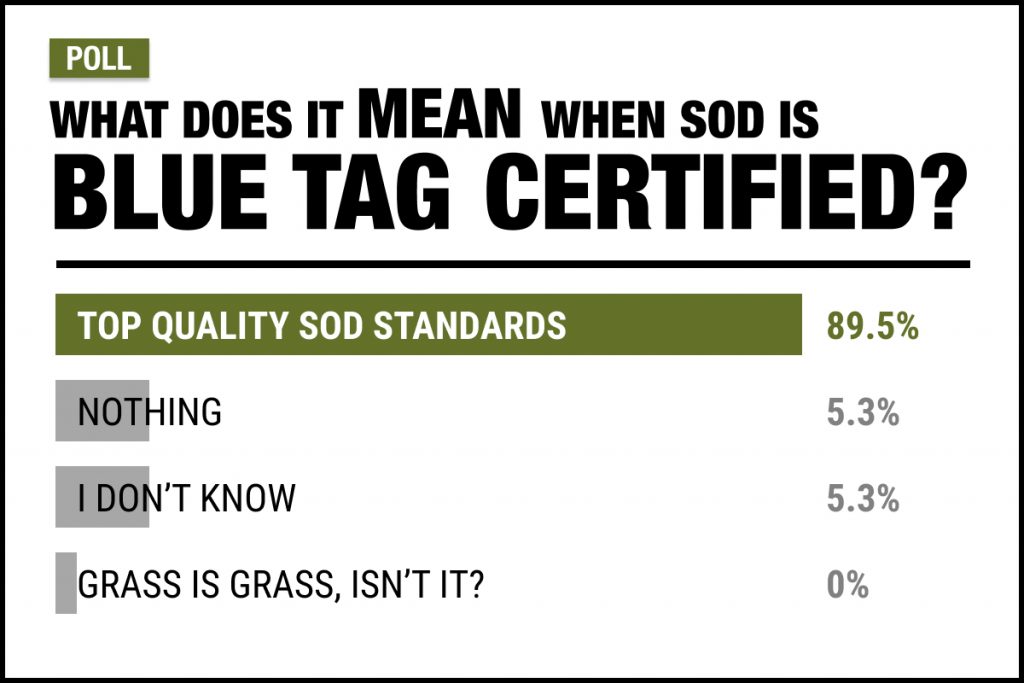Does Blue Tag Certification Matter?
Jul 22nd 2024
Most green industry professionals will know what it means to purchase blue tag certified sod. We ran a poll across our socials and found that over 90% of our followers were familiar with the term and its meaning, with less than 10% either having never heard of it or didn’t believe it meant anything for turfgrass. We decided it would be helpful to put together a little refresher on why a blue tag matters to your business (and ours).

What does Blue Tag Certified Sod Mean?
Blue tag certified sod refers to sod that has been certified by a third-party organization to meet elevated quality standards. These standards include criteria related to the purity of the grass species, source and documentation of the planting stock, and noxious weed content. Blue tag certification confirms the sod purchased is true-to-type, contains no alternative grass varieties, perennial grasses or noxious weeds at time of inspection. Before a field can even be considered for Blue Tag Certification, it must meet stringent pre-planting specifications, and after the turfgrass is grown, it must undergo inspection three times a year by third-party assessors (like the Georgia Crop Improvement Association (GCIA)). These standards are the reason many landscape architects explicitly call for Blue Tag Certification in their design plans. It is also the highest quality classification in the sod industry.
Blue Tag Certified Sod vs. Regular Sod
The difference between blue tag certified sod and regular sod is quality assurance. Regular sod is just grass that does not guarantee or require the same elevated standards as blue tag certified sod. Quality assurance is guaranteed via blue tag certification because the sod has met rigorous inspection requirements and meets the professional standards of the certifying agency. These tests ensure that the sod is true-to-type and contains no noxious weeds.

